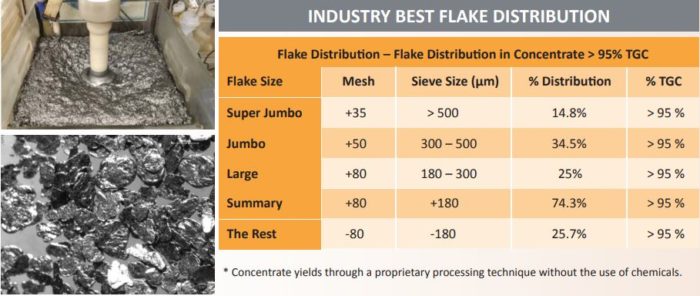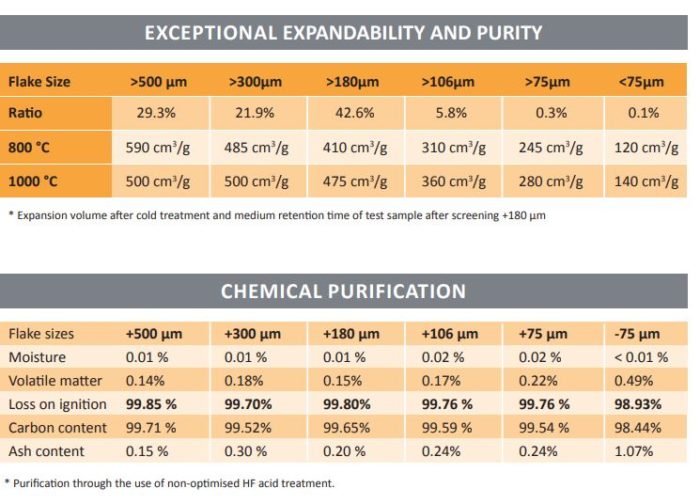What makes Graphite unique?
Graphite with chemical symbol ‘C’.
The main properties of graphite include:
- Exceptional conductor of heat and electricity
- Retaining stability and strength to temperatures in excess of 3 600°C
- High natural lubricating properties
- Lightest reinforcing agent
- Highest natural strength and rigidity of any other material
- High resistance against other hazardous chemicals
Graphite contains a wide range of characteristics, due to the structure of copious layers of carbon atoms and various two-dimensional planes which are loosely bonded to one another. One such layer is called: Graphene.
These layers of carbon atoms move across each other’s cleavage planes with ease and when layers are separated, it sets electrons free which causes carbon to start behaving differently.
There are three different forms of Natural Graphite occurring in platy, hexagonal crystals:
- Flake (Lindi Jumbo Graphite product)
- Amorphous
- Vein
Flake Graphite
Flake graphite is the most abundant crystalline form of graphite and is associated with metamorphosed graphitic and carbonaceous sediments. Grades range between 1-12% Cg, yet higher grades can also be found. The graphite quality is typically established by flake size and concentrate TGC grades, with the coarser flakes (>150 micron) being more sought after due to their higher TGC grades.
Amorphous Graphite
Amorphous graphite is classified as the lowest quality material and occurs as microcrystalline (<75μm crystal size) masses. Its genesis is through the process of metamorphism of coal or other rock material rich in carbon. It is generally found in the form of seams, with grades ranging between 30-90% Cg, and purities between 60-90% C.
Vein Graphite
Vein graphite is fairly rare, and the most famous example is mined in Sri Lanka. This graphite occurs in high grade veins (+90% Cg), producing high purity (+98% carbon) concentrates. The flake sizes, grade and purity can vary and seem to be generally very coarse.
Demand & Application
Steel industry:
|
Automotive industry:
|
Other industries:
|
Research and Development:
|
Markets and the Lindi Jumbo Premium Product
The range of markets for which Lindi Jumbo graphite is suitable due to the production of various size fractions. Premium products deliver a higher sales revenue.







